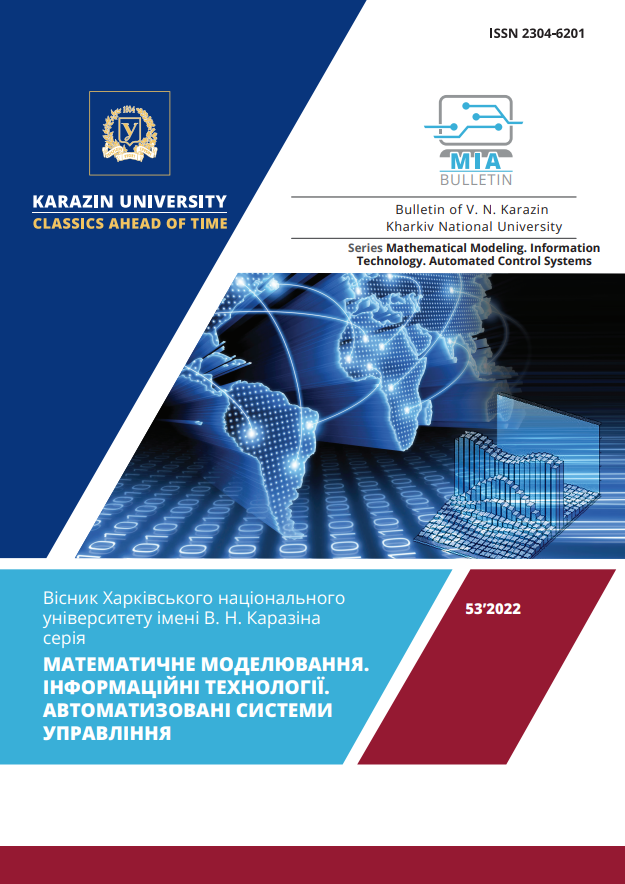Analysis Of Biometric-Based Identification Algorithms In Electronic Trust Services Systems
Abstract
The article is devoted to the usage of identification algorithms based on biometric personal data (biometrics) in the electronic trust services. This theme is of considerable interest due to the fact that it is becoming one of the most used tools in everyday life. It can include such things as fingerprint and facial scanners in modern cell phones as well as more official aspects such as a personal passport or signature.
The main problem of electronic identification is that the most effective algorithms: based on abstract-minutiae cylindrical codes, where minutiae are unique to each fingerprint and determine the points of change in the structure of the capillary lines (ending, splitting, breaking, etc.), the orientation of capillary lines and coordinates at these points.
Also, algorithms based on fuzzy extractors, where by fuzzy extractor we mean the system (object, algorithm) which transforms biometric data into random sequences, providing the opportunity to apply encryption methods for biometric security. Although they perform their role, they do not always work correctly and present a possible danger to a user. A comprehensive analysis of the advantages and disadvantages of such algorithms requires further investigation and combination of these algorithms to solve existing problems and improve overall response.
Not only could that provide a higher level of protection, but also greatly simplify the mathematical complexity of data processing, as well as lead to an increase in the number of correct triggers and overall increase the efficiency of using biometric technology in electronic trust services.
Downloads
References
/References
Podhaiko V.О., Rassomakhin S.G. Analysis of identification algorithms in electronic trust services systems. // Coll. of Scient. Papers of the First International Scientific and Technical Conference "Communication Systems and Technologies, Informatization and Cyber Security: Current Issues and Development Trends", Kyiv, November 25-26, 2021. – P. 239-240.
A. Menezes, P. van Oorschot and S. Vanstone, Handbook of applied cryptography. – Boca Raton, FL: CRC Press, 1996. – P. 306-312.
Yen-Lung Lai, Jung-Yeon Hwang, Zhe Jin, Soohyong Kim, Sangrae Cho and Andrew Beng Jin Teoh. A Symmetric Keyring Encryption Scheme for Biometric Cryptosystems. – arXiv:1807.02251v1 [cs.CV], 6 Jul 2018. – P. 1-15.
Wajih Ullah Baig, Umar Munir, Waqas Ellahi, Adeel Ejaz, Kashif Sardar. Minutiae Texture Cylinder Codes for fingerprint matching.// Information Sciences. V.502, October 2019. – P. 492-509.
Подгайко В.О., Рассомахін С.Г. Аналіз алгоритмів ідентифікації у системах електронних довірчих послуг.// Зб. наук. праць І Міжнародної науково-технічної конференції “Системи і технології зв’язку, інформатизації та кібербезпеки: Актуальні питання і тенденції розвитку”, м. Київ, 25–26 листопада 2021 року. С. 239-240.
A. Menezes, P. van Oorschot and S. Vanstone. Handbook of applied cryptography. – Boca Raton, FL: CRC Press, 1996. P. 306-312.
Yen-Lung Lai, Jung-Yeon Hwang, Zhe Jin, Soohyong Kim, Sangrae Cho and Andrew Beng Jin Teoh. A Symmetric Keyring Encryption Scheme for Biometric Cryptosystems. – arXiv:1807.02251v1 [cs.CV], 6 Jul 2018. P. 1-15.
Wajih Ullah Baig, Umar Munir, Waqas Ellahi, Adeel Ejaz, Kashif Sardar. Minutiae Texture Cylinder Codes for fingerprint matching.// Information Sciences. V.502, October 2019. P. 492-509.




